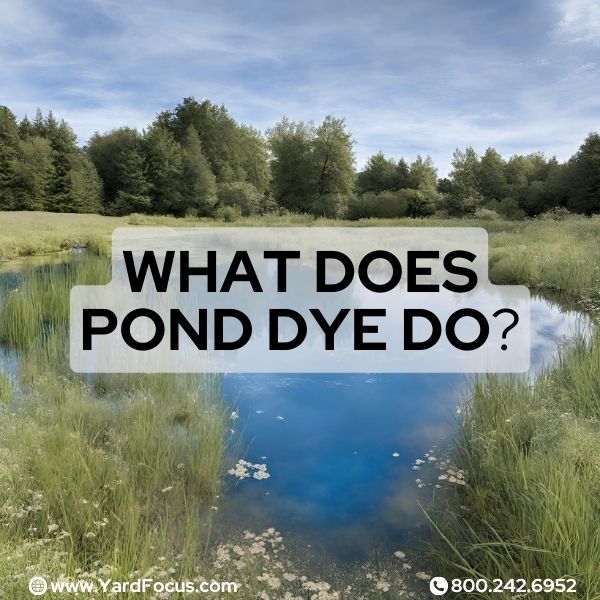
What Does Pond Dye Do?
Have you ever wondered what does pond dye do? Is your pond's water looking murky, and algae and debris are ruining its beauty?
It can solve this problem. It adds color and prevents the growth of unwanted plants.
A clean, clear pond reflects nature's splendor.
Basics of Pond Dye
Dye enhances water clarity by limiting sunlight penetration into deep waters, which can inhibit algae blooms and submerged plant growth by reducing photosynthesis.
Dyes come in various rich colors, like blue or black.
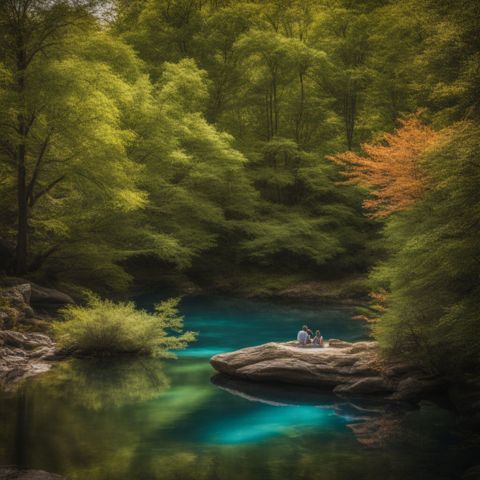
They tint the pond to the desired shade. Dyes beautify waters by imparting natural hues.
Dyes dissipate over time due to factors like sunlight exposure and rainfall.
Replenishing dye maintains the desired water color. Some dyes contain additives that further assist in controlling algae or aquatic vegetation growth.
Proper dye application helps avoid negative impacts on aquatic ecosystems or wildlife.
Pond Dye for Algae Control
Pond dye limits sunlight penetration to the deeper layers of the pond, which can reduce the rate of photosynthesis in aquatic plants and algae.
Algae growth reduces. The reduced light availability caused by dye may decrease the abundance of photosynthetic microorganisms.
It can potentially alter aquatic food webs by affecting primary production, though the extent can vary based on the ecosystem and dye concentration.
Dye application can help limit algal blooms by reducing the sunlight penetration necessary for photosynthesis.
Unsightly scum diminishes. Foul odors disappear. Dyes improve water appearance. They lend vibrant hues. Blues and greens enhance aesthetics.
While dyes reduce sunlight penetration to help control algae growth by limiting photosynthesis, they do not affect ultraviolet radiation as they lack the properties necessary to filter UV rays.
Suppressing sunrays reduces photosynthesis, which can decrease the production of organic matter and affect the biomass of microorganisms that rely on photosynthesis.
Algal buildup slows. Dye reduces turbidity. Clearer waters emerge. Fish become more visible. Aquatic plants receive less energy. Their growth retards. Dyes restrict unwanted vegetation.
By moderating plant and algae growth, pond dyes can contribute to the preservation of aquatic ecosystems.
Aesthetic Benefits of Using Pond Dye
Transitioning from algae control, dyes offer visual appeal. They transform murky ponds into reflective mirrors, complementing landscapes.
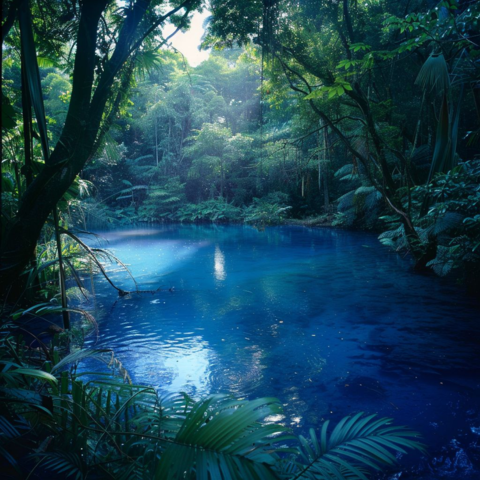
Blue dyes mimic natural ponds, while greener hues evoke lakes.
The colors mask unsightly debris, creating an inviting oasis. Vibrant ponds elevate property values by enhancing scenery.
Homeowners adore the beauty dyes provide. Pristine ponds become a source of pride for neighborhoods.
Local water features become community assets when treated with pond colorants. The dyes transform stagnant waters into tranquil retreats ideal for relaxation.
Maintaining a colorful, clear pond boosts curb appeal tremendously for any property owner.
Environmental Considerations for Pond Dye
Environmental impact remains a key consideration when using pond dye. Top-quality dyes are non-toxic and biodegradable.
They won't harm fish, plants, or other aquatic life. The dyes use natural pigments derived from sources like plant extracts.
This makes them eco-friendly and safe for use around animals and humans.
The dyes are environmentally sustainable and are designed not to disrupt the aquatic ecosystem.
Many reputable brands get their dyes certified by organizations like OMRI (Organic Materials Review Institute).
This ensures the products meet strict environmental standards. Responsible application as per instructions is vital.
Incorrectly used, excessive dye might indirectly support algal growth if it alters the thermal stratification of the water, although this effect varies significantly with specific conditions.
Pond Dye: Is It Safe for Pets and Humans?
Pond dye products are typically made from ingredients that are considered safe and eco-friendly, containing water-soluble, non-toxic dyes that are approved for use in environments inhabited by pets, livestock, and humans.
Major brands ensure their formulas comply with regulations and guidelines.

Properly applied, pond dyes are designed to be non-toxic and pose minimal risk to wildlife and pets, though it is still advisable to prevent them from drinking from treated ponds.
Dyed ponds remain safe for swimming when following product instructions. Reputable manufacturers test extensively to verify safety claims.
Impact of Pond Dye on Property Value
A well-maintained pond or lake enhances property value. Pond dye improves water clarity and color.
It prevents unsightly algae blooms, foul odors, and murky conditions. These issues signal poor pond health and reduce property appeal.
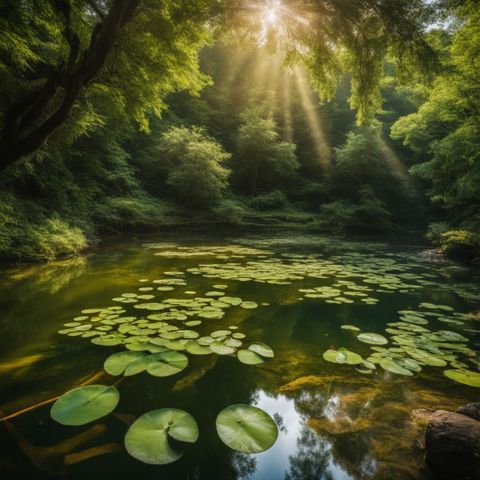
An attractive body of water is an asset for homeowners. It boosts curb appeal and distinguishes a listing from others.
Pond dye contributes to water cleanliness and fish habitat quality.
This protects aquaculture investments and improves enjoyment for homeowners. dye application follows proper dosing guidelines.
Varieties of Pond Dye
Pond dyes come in various colors, like blue, black, and shades of blue-green. The color choice impacts aquatic life differently.
Lighter dye concentrations have minimal effects on plankton and aquatic vegetation communities.
Black dyes block more sunlight, limiting photosynthesis and plant growth.
Blue dyes allow some sunlight penetration, moderating effects on aquatic ecosystems. Water management goals determine the appropriate dye color selection.
Proper dye application maintains a healthy, balanced pond environment.
Different pond dyes serve distinct purposes based on their light transmission properties.
Selecting suitable dyes tailored to specific waterbody conditions is crucial for effective water quality management.
The next section covers guidelines for choosing the right dye formulation.
Choosing the Right Pond Dye
Choosing the right pond dye is crucial. Pond size determines the amount of dye needed. Various color options are available.
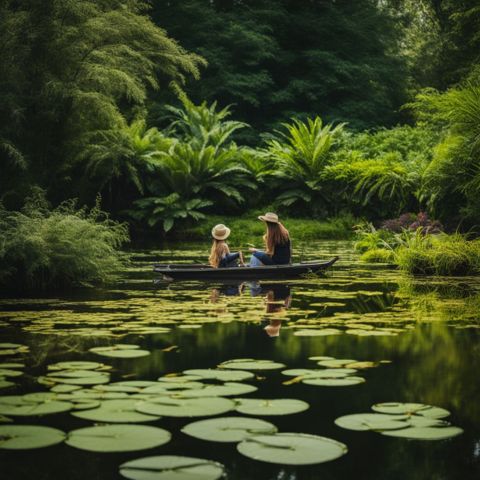
Considering the Pond Size
Pond size significantly impacts dye requirements. Larger ponds need more dye for effective coloration and algae control.
Accurately measure your pond's surface area and depth. Consult product guidelines to calculate the proper dye amount.
Underestimating the size risks inadequate coverage and wasted money. Overestimating wastes dye and harms aquatic life.
Regularly reapply dye as it dissipates over time. Frequent applications maintain the desired shade in larger ponds.
Pond dimensions influence color choice too. Deeper ponds benefit from darker blues that penetrate further.
Shallow ponds suit lighter teals that avoid oversaturation. Expansive ponds may require bolder hues for uniform coloring.
Evaluating Color Options
After considering the pond size, comes the crucial decision of evaluating color options.
Pond dyes offer various shades, like blue or greener hues. Choosing the right color impacts the pond's appearance and functionality.
- The perception that aquatic plants thrive better in specific dye colors may depend on the depth and clarity of the water rather than the dye itself. Blues enhance visibility, allowing subsurface plants to photosynthesize. Greens mimic natural waters, promoting overall aquatic life.
- Darker colors, like black, limit sunlight penetration. This controls algae blooms and submerged weed growth.
- Consider fish species. Some fish prefer specific colored environments for feeding, mating, and camouflage.
- Landscape aesthetics play a role. Blues create a refreshing, mirror-like effect. Greens blend naturally with their surroundings. Other colors, like red or yellow, provide vibrant visual interest.
- Water clarity affects color perception. Clearer waters allow truer color rendering. Murky conditions may mute or distort specific shades.
- Seasonal factors influence color choices. Cooler blues work well in the summer. Warmer earth tones complement spring or fall foliage.
Evaluate all factors carefully. The right color enhances both the pond's functionality and beauty.
Application Guidelines for Pond Dye
Applying pond dye correctly is crucial. Use a pond dye calculator to measure the needed amount.
Follow the step-by-step guide from the manufacturer.
Measuring the Correct Amount
Precise measurement is crucial. It determines the effectiveness of pond dye.
- Understand pond volume and surface area.
- Follow the product directions carefully.
- Use measuring tools like graduated cylinders.
- Measure the dye concentrate accurately.
- Calculate the needed quantity based on water volume.
- Start with the minimum recommended dose.
- Adjust the dose based on water clarity goals.
- Overapplication wastes product and money.
- Underapplication yields poor results.
Proper measurement ensures:
- Correct dye concentration in water
- Uniform coloration throughout the pond
- Desired shade of blue or black tint
- Sufficient sunlight blockage for algae control
- Cost effective use of dye products
Brands offer calculation aids like:
- Online calculators based on pond dimensions
- Printed charts mapping dose to water volume
- Customer support for measurement assistance

Step-by-Step Application
After measuring the correct amount of pond dye, it's time to apply it. First you need clean water.
Then follow these steps:
- Mix the dye concentrate with water in a bucket or pump sprayer. Stir thoroughly until fully dissolved.
- Walk around the pond's perimeter. Gently pour or spray the dye solution into the water.
- For larger ponds, use a boat. Apply the dye evenly across the surface.
- Repeat the application as needed to maintain the desired color. Frequency depends on factors like sunlight exposure and water flow.
- Use dye blocks or liquid for spot treatments in inlets or problem areas.
- Consider using a dispensing system for consistent, low dye levels in the water.
- Always follow product instructions for safe handling and dosage rates.
Proper dye application keeps ponds vibrant and inhibits undesirable aquatic growth. Regular maintenance ensures long-lasting beauty.
Lifespan and Maintenance of Pond Dye
Pond dye gradually fades over 4-8 weeks. Its longevity depends on factors like rainfall, added water, filtration, and dye concentration.
Regularly checking dye levels and reapplying is necessary to maintain the desired color intensity.
Following manufacturer guidelines ensures safe, effective pond dye use without harming aquatic life.
Maintaining the right dye concentration is crucial. Overuse can harm fish and plants.
Regularly testing water quality and monitoring dye levels helps avoid over-application.
Proper dilution, as per instructions, prevents potential issues like oxygen depletion or toxicity.
Assessing Pond Dye Compatibility with Aquatic Life
Ensuring pond dye compatibility with aquatic life is crucial. Safe dyes won't harm fish, plants, or microscopic organisms like phytoplankton and zooplankton.

These dyes are non-toxic and eco-friendly, allowing aquaculture and natural food chains to thrive.
Reputable brands conduct extensive testing to verify product safety for all trophic levels.
Proper dye selection and application rate prevent issues like fish kills or damage to beneficial submerged plants and algae.
Consulting experts helps choose the right dye for specific waterbodies and aquatic ecosystems.
FAQs
What does pond dye do for filamentous algae and pond scum?
Pond dye helps control the growth of filamentous algae and pond scum by blocking sunlight from reaching the photic zone.
Can pond dye affect fish and other aquatic life?
While pond dye is generally safe for fish and filter feeders, excessive use or incorrect application can potentially reduce primary productivity and impact populations of phytoplankton and zooplankton.
Does pond dye prevent dirt and runoff water from entering the pond?
No, pond dye does not prevent dirt, detritus, or runoff water from entering the pond. It only controls algae growth.
Can pond dye be used in fish-farming ponds?
Pond dye can be used in fish-farming ponds to control algae growth and maintain a mirrored water surface, but it should be selected and applied carefully to avoid affecting water quality and fish health.
Does pond dye affect emergent plants and pondweeds?
Pond dye primarily impacts free-floating algae and does not directly affect rooted emergent plants or pondweeds.
Conclusion
Finding the answer to what does pond dye do will offer an effective solution for maintaining clean, aesthetically pleasing water bodies.
It limits sunlight penetration, curbing excessive plant growth and algae blooms.
Selecting the right dye and applying it correctly ensures a balanced aquatic ecosystem.
Responsible use protects aquatic life while enhancing visual appeal. Proper dye application beautifies ponds and lakes, increasing property values.
